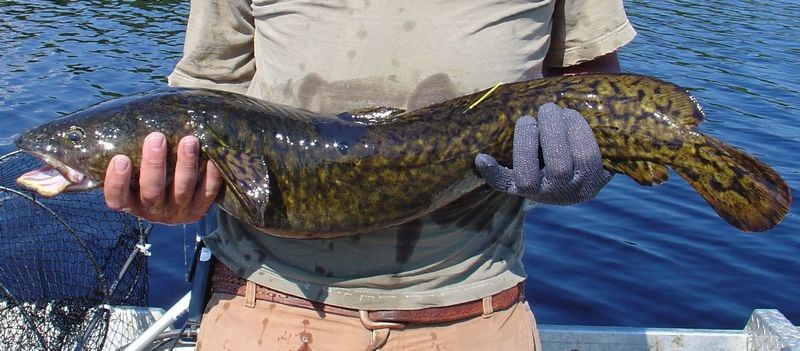The Lheidli T'enneh has landed a grant from the Habitat Conservation Trust Foundation (HCTF) to complete a three-year study of a a fish popular among this region's ice fishers.
The $27,150 will largely go towards analyzing data collected over the last two years on the burbot at Norman Lake and Saxton Lake.
The aim is to develop strategies to improve management of the species' population.
Characterized as a fresh water ling cod, and just as tasty, their popularity among anglers has been on the rise, said Toth.
"The provincial mandate for managing burbot has been a quota of five fish per day per angler without really any knowledge of burbot population dynamics," said fisheries biologist Brian Toth.
"No lakes, until we started this study, other than Eaglet Lake just east of town, had ever been assessed for numbers of burbot and their population structure etcetera."
Over the last two summers, Toth and fellow fisheries biologist Chris Pharnes, and technicians Carl Frederick, Troy Frederick and Konrad Frederick have been out on the water live-trapping burbot and gathering numbers on their size, weight, age and gender. Ministry of Environment fisheries biologist Cory Williamson has also been involved.
They've also asked anglers to drop off the carcasses of the burbot they've caught over the winter for study.
"If you look at a perfect population that hasn't been impacted by angling, you'll see a natural curve of length and age structure distributed through that population," Toth said.
"If you look at a lake that receives a certain amount of angling pressure where they focus on fish of a certain size - so you're catching fish longer than 35 centimetres - it disproportionately takes from certain aspects of distribution of the population.
"And the main point is to get an understanding of how much harvest can these populations sustain. In other words, are the regulations on catch and catch rate suitable to sustain the fisheries."
Toth said Eaglet Lake was assessed by the Lheidli T'enneh several years ago and found to have been fished at a higher rate than was sustainable. In response, the catch limit was reduced.
"In terms of the lakes we've looked at now, it's a little bit early [to make conclusions]," Toth said. "The focus the last to years has been on getting the sampling done and get the data that we need and this year is really about putting it together into what does it actually tell us in terms of how we can use it as a management tool," Toth said.
Information from other lakes will be used as well, he added.
The HCTF, which receives 90 per cent of it funding from hunting, fishing, guide-outfitting and trapping licence surcharge fees, provided $40,000 in each of the last two years for the study.



